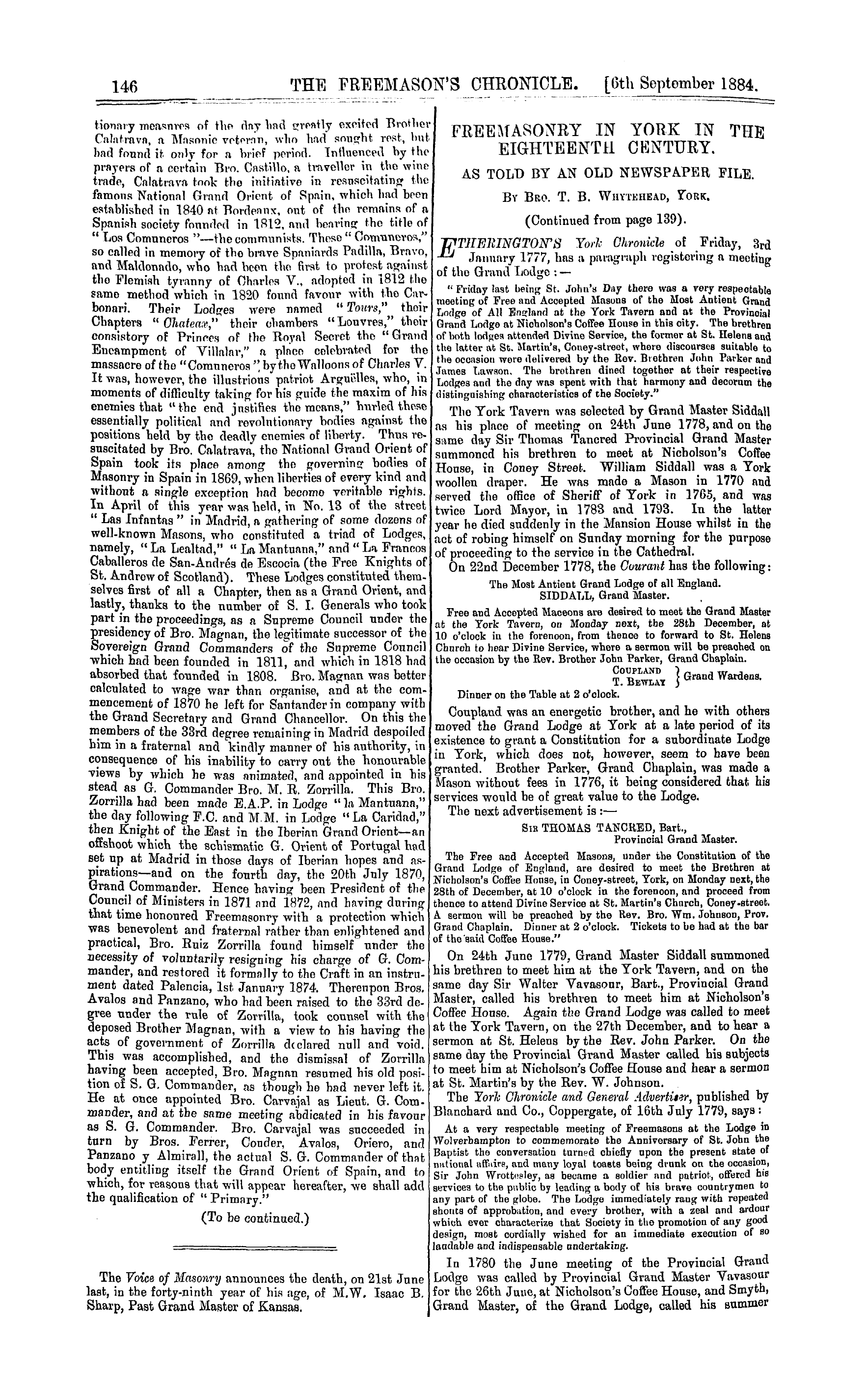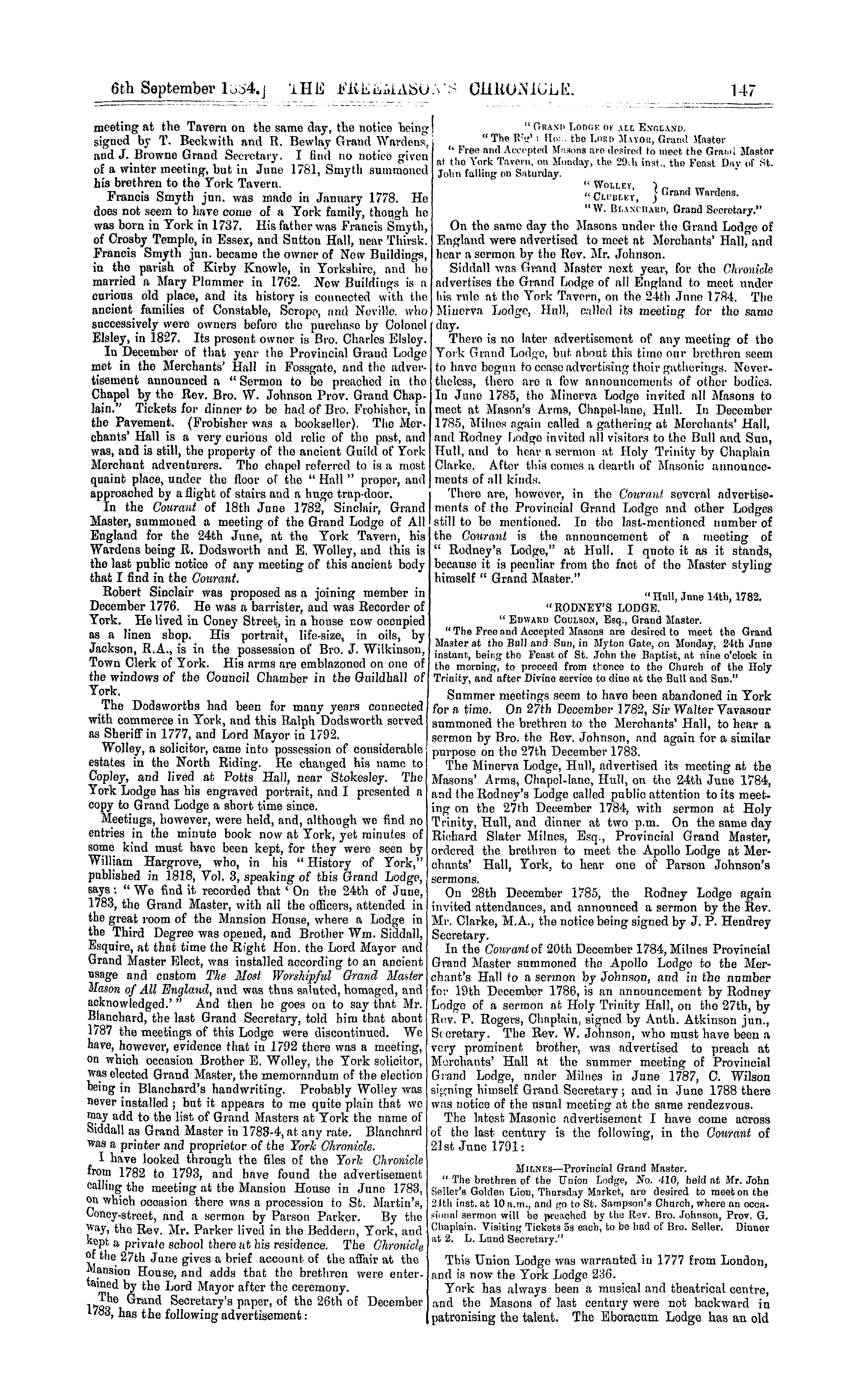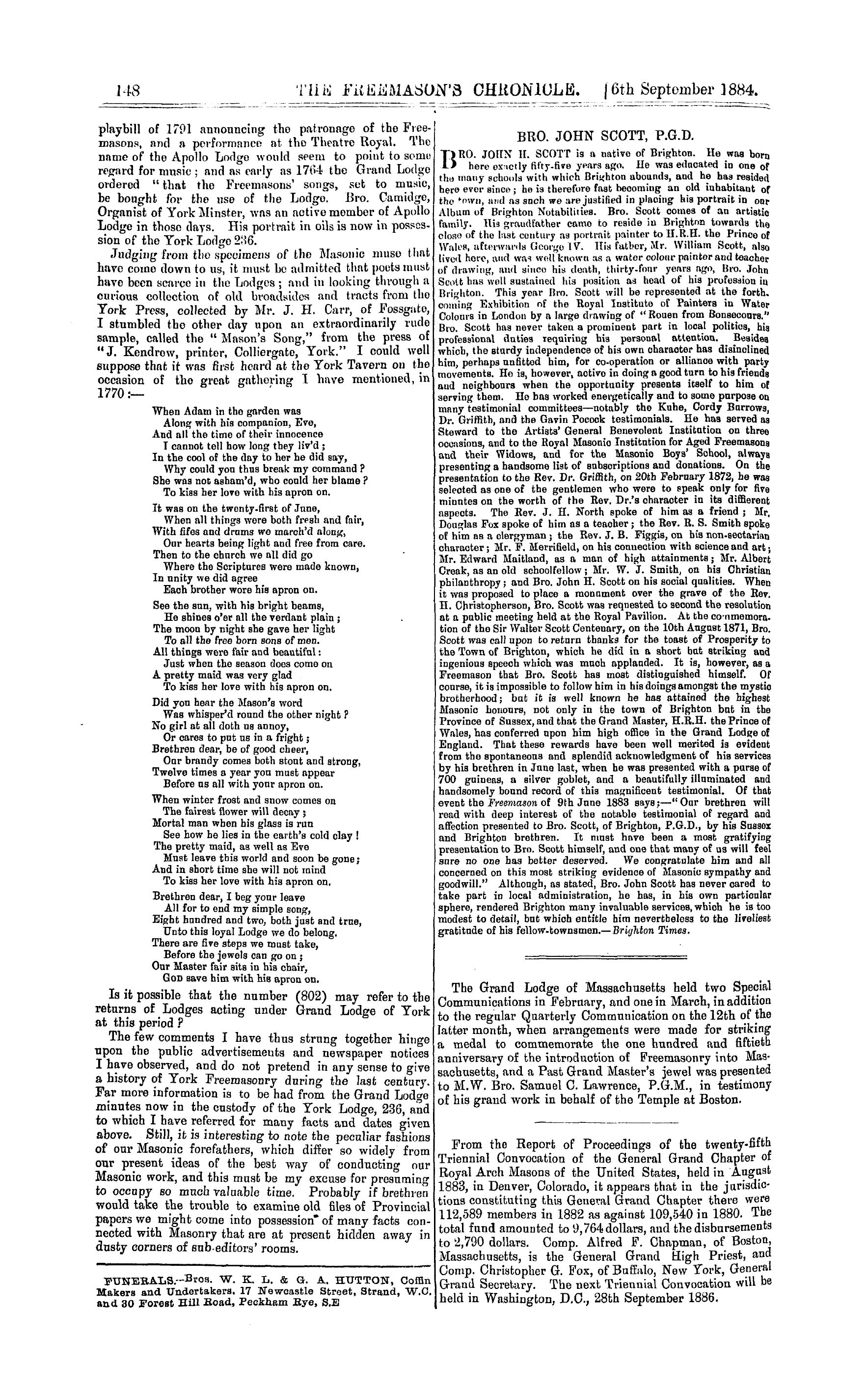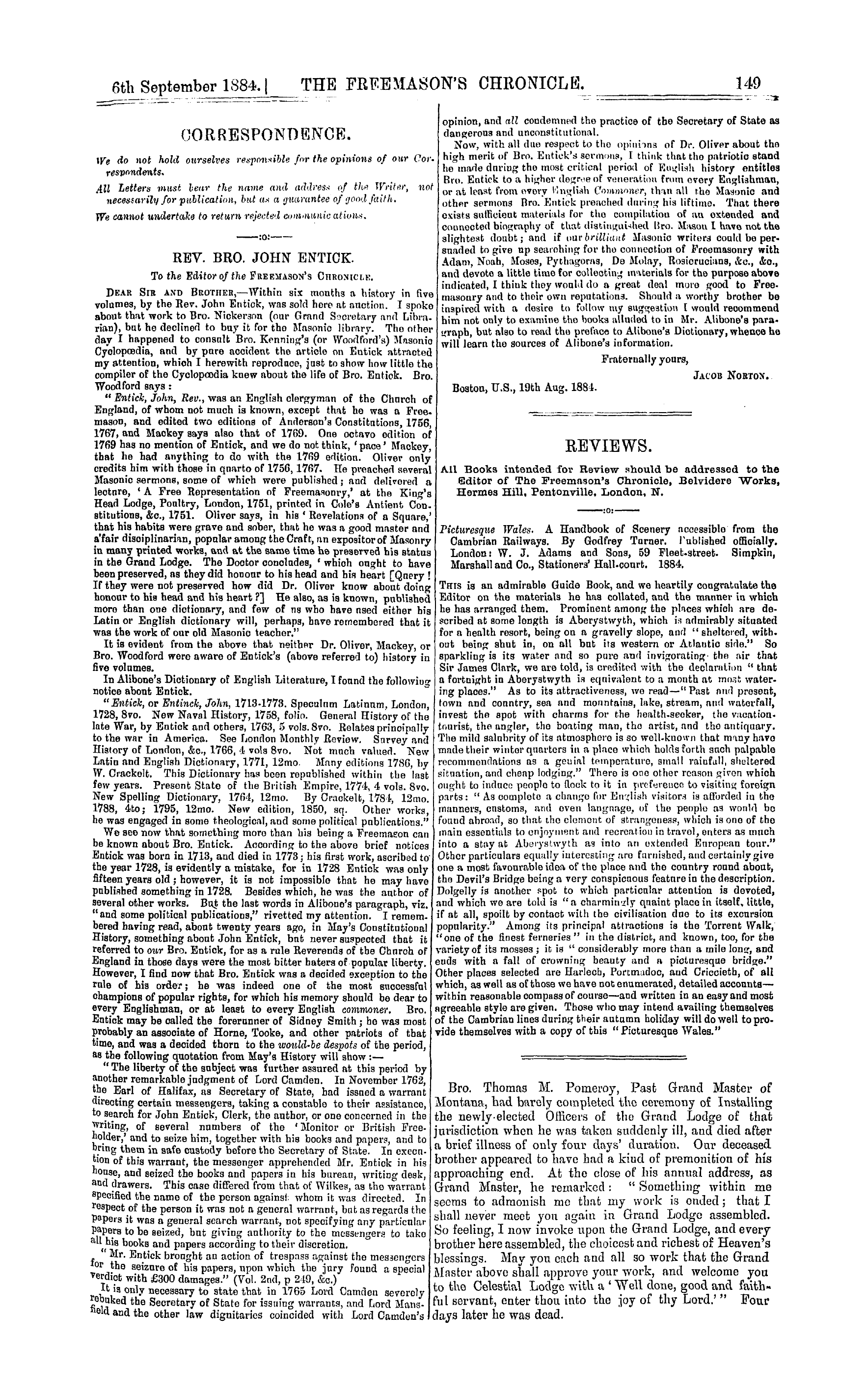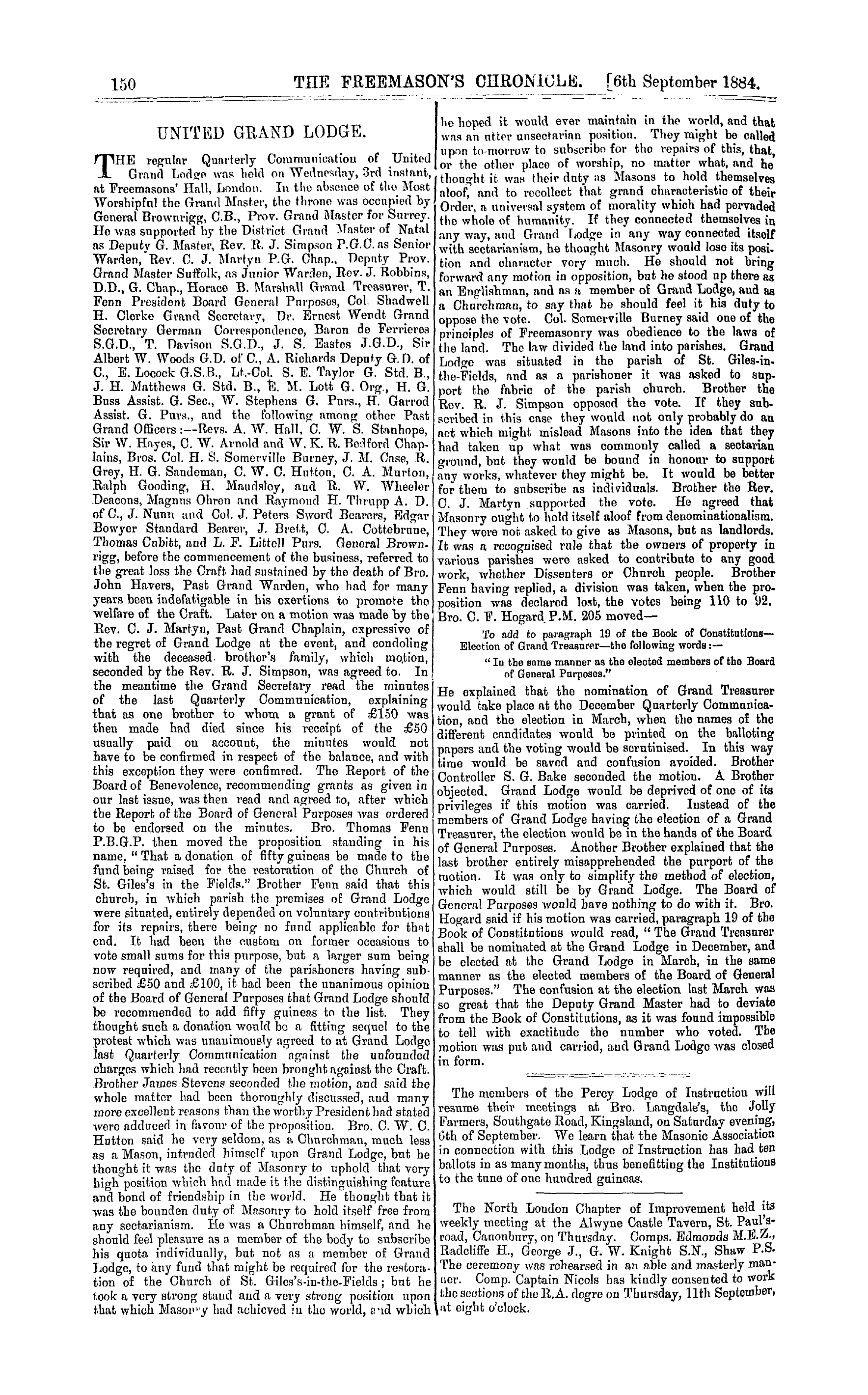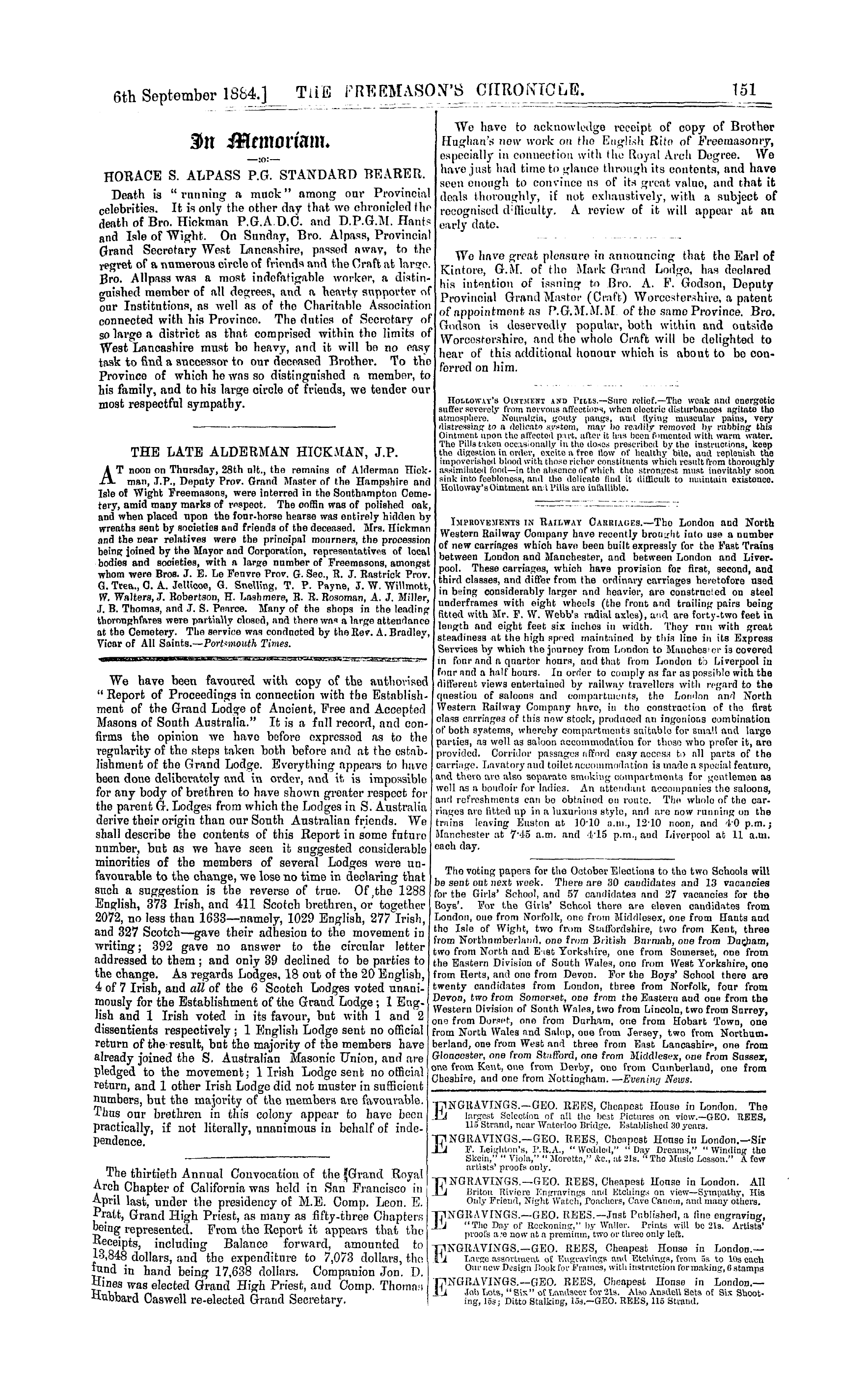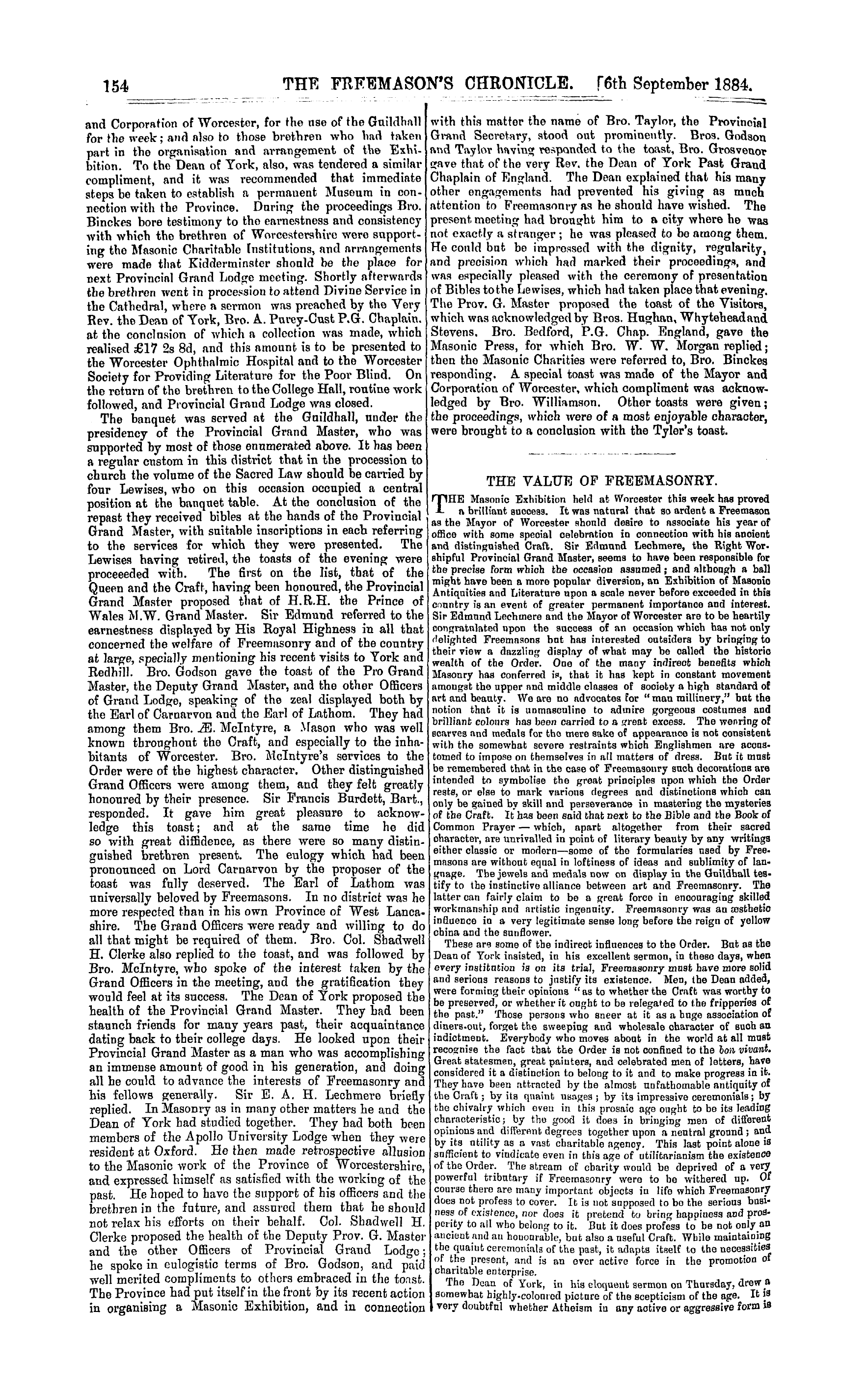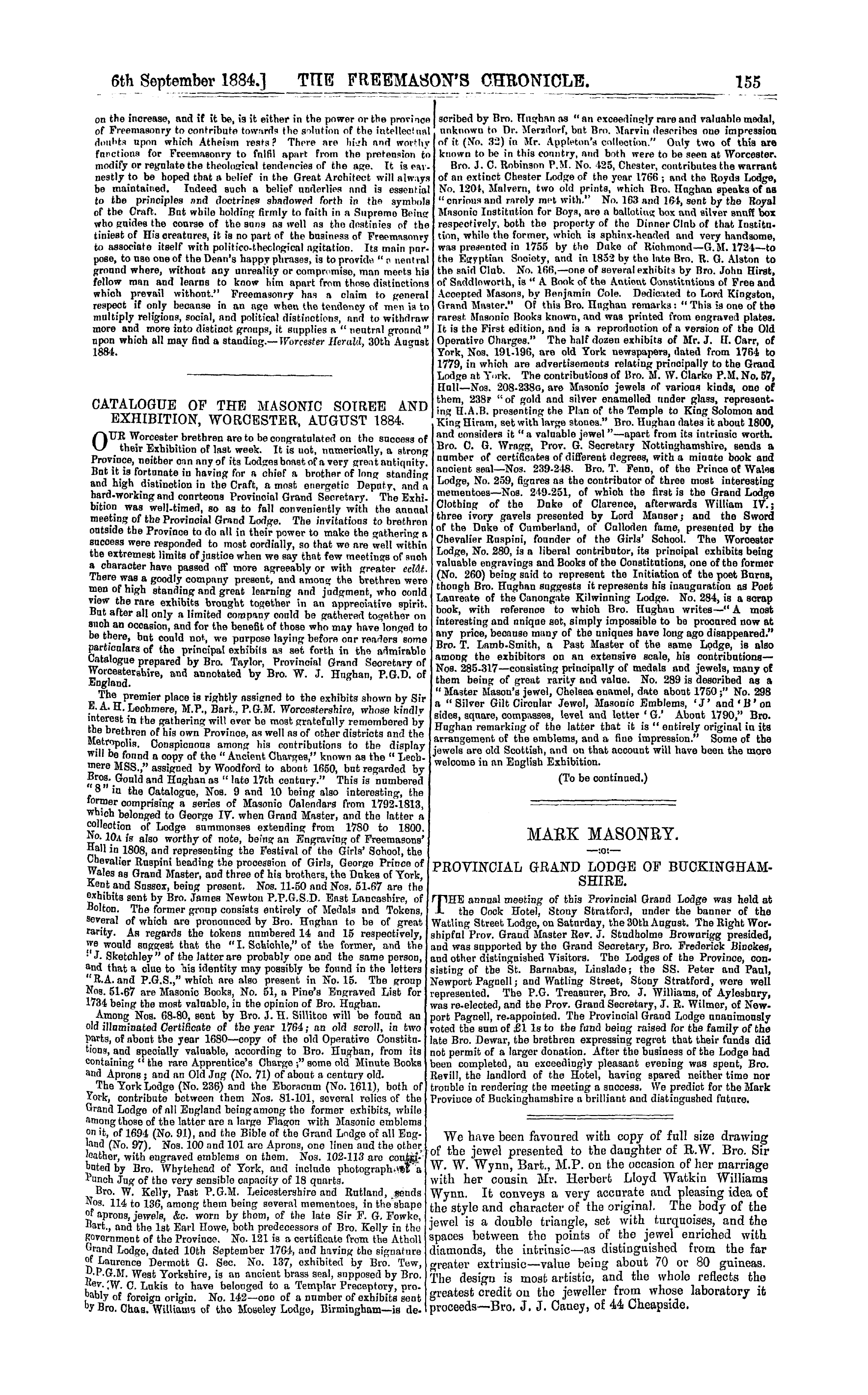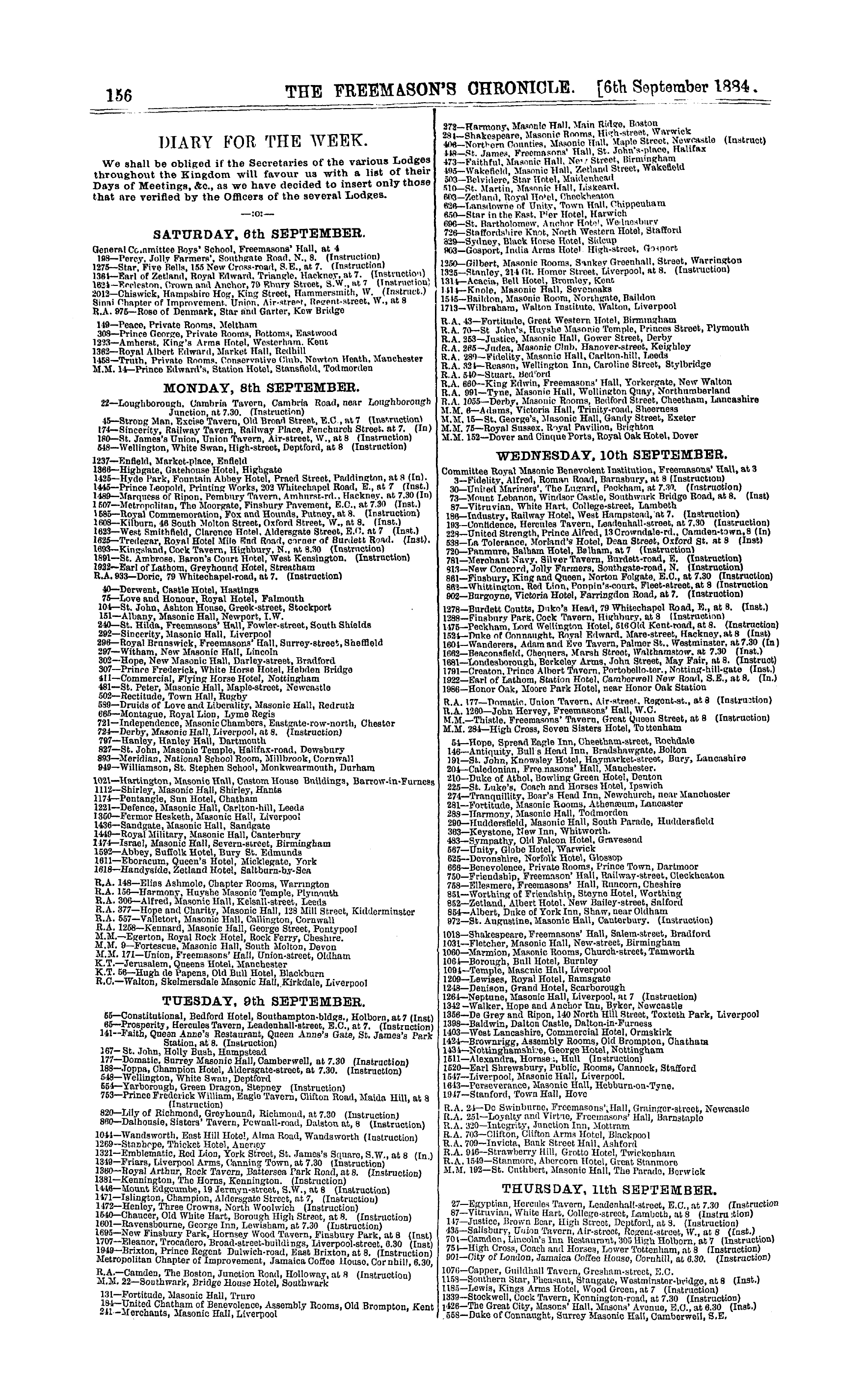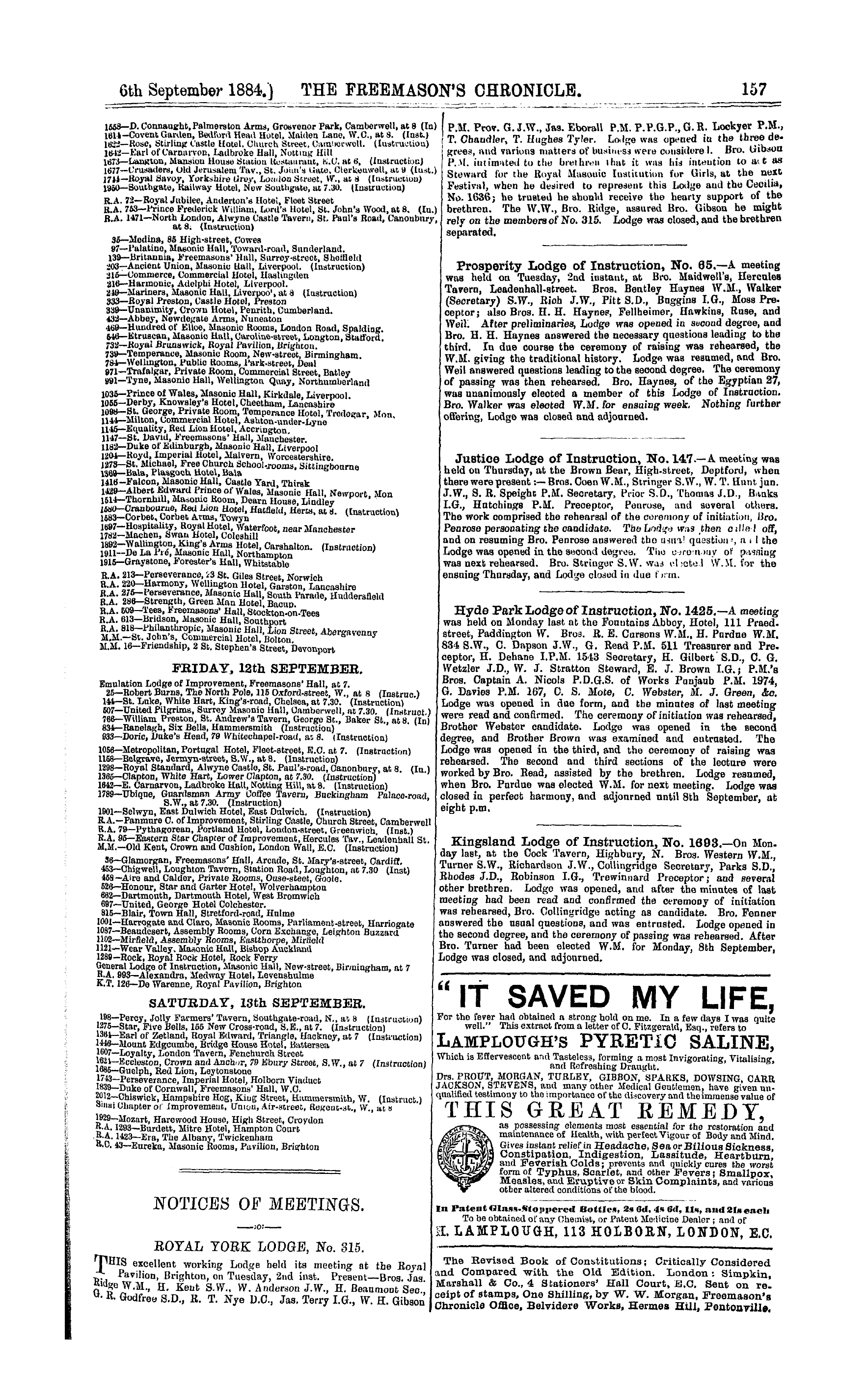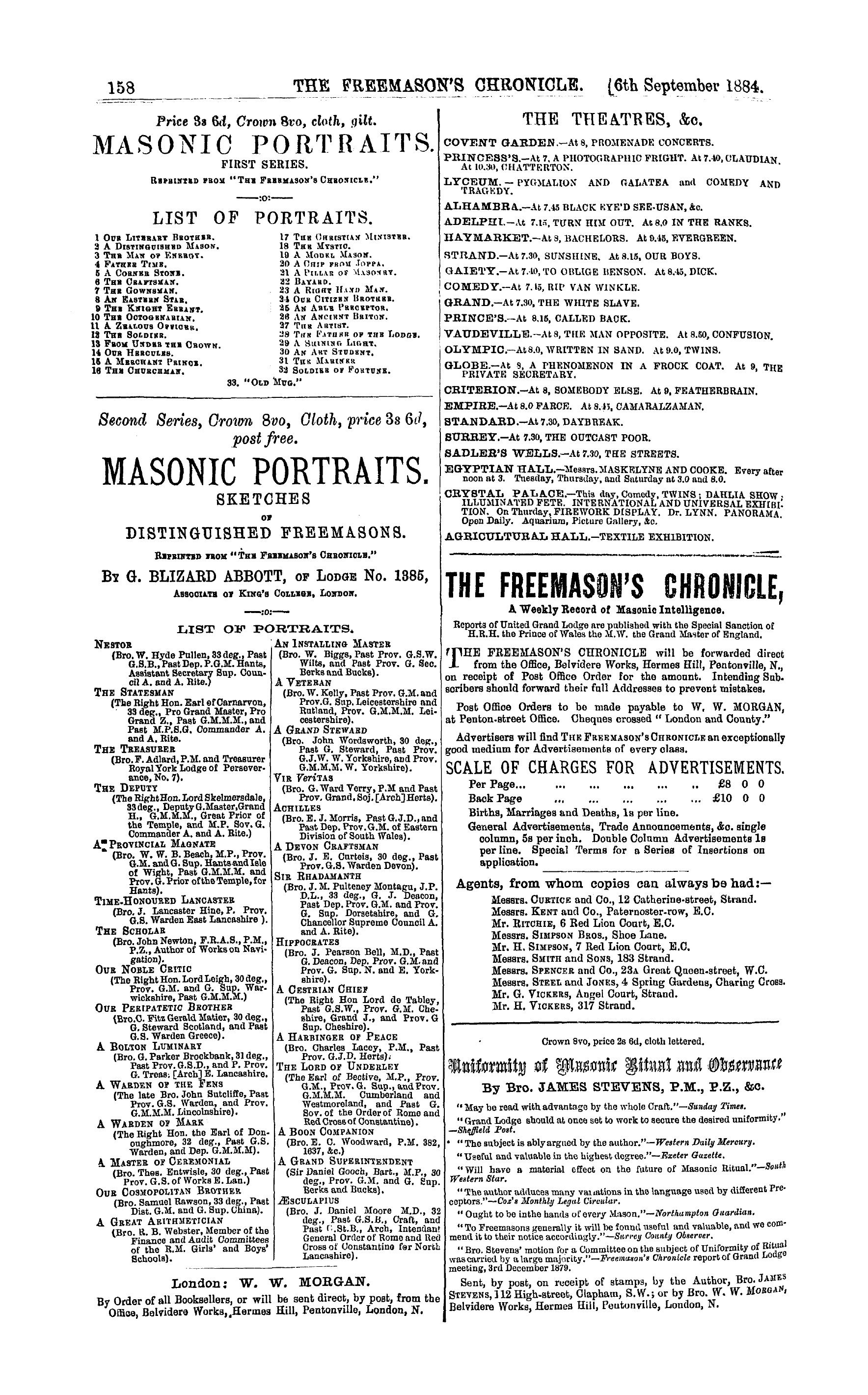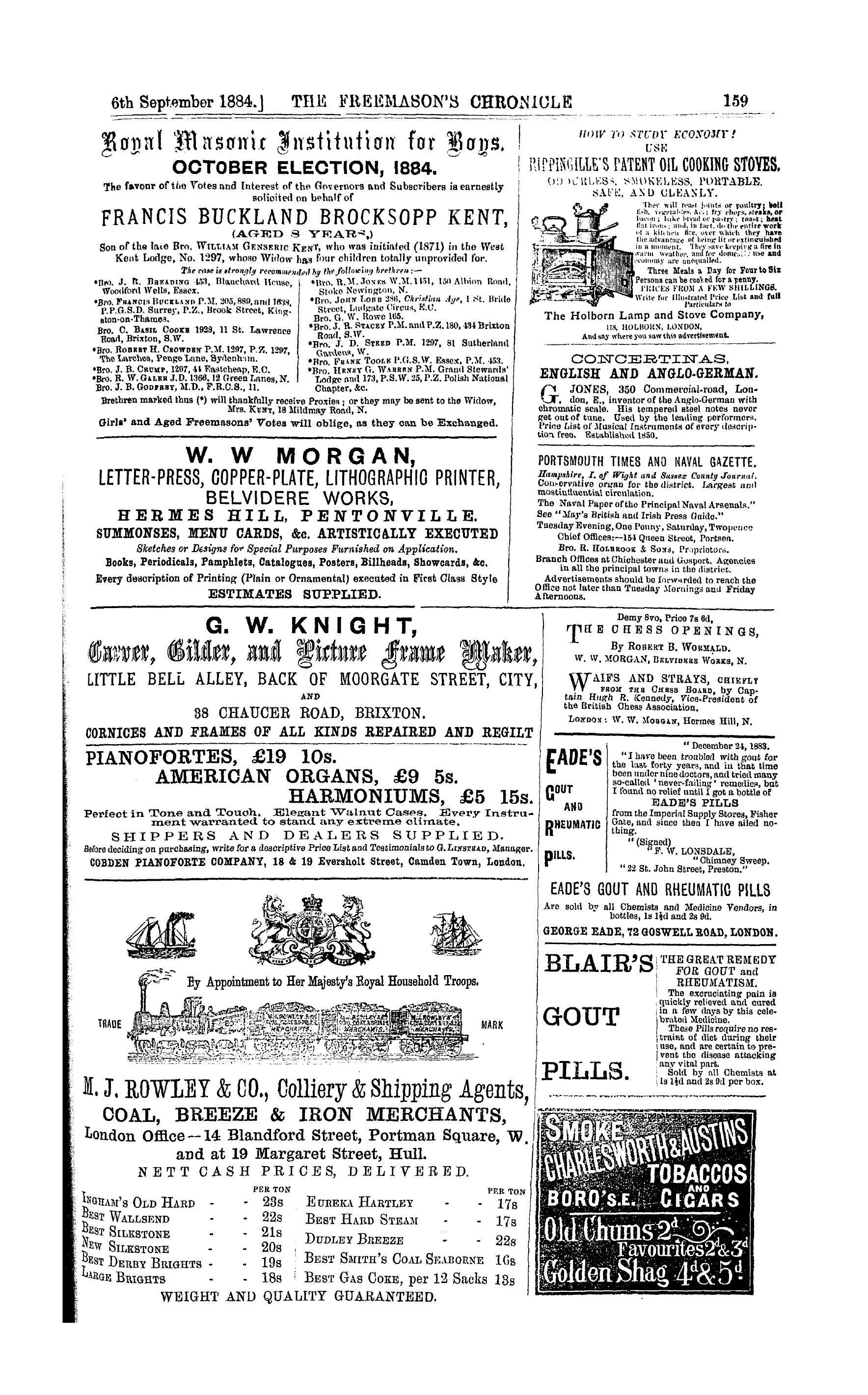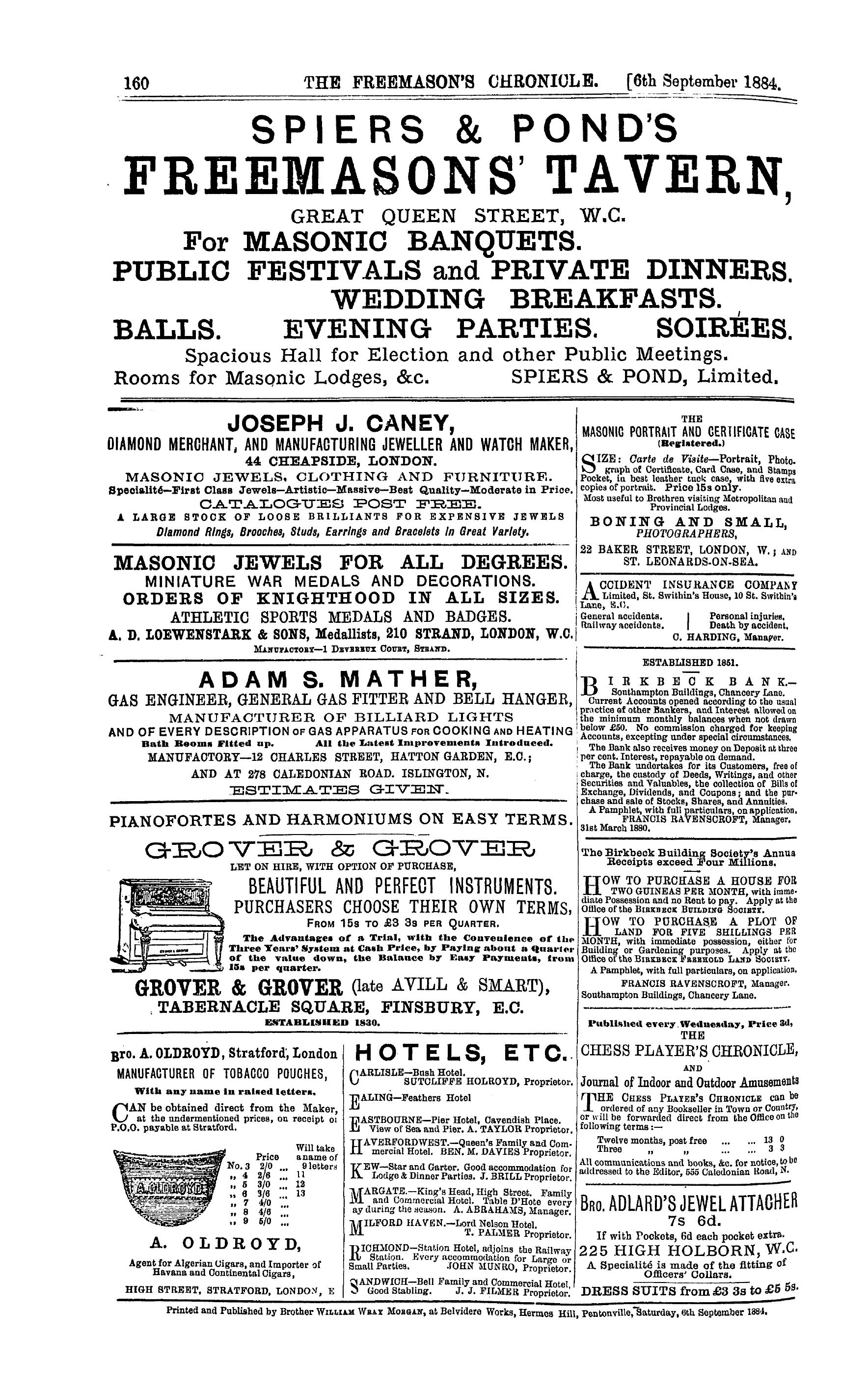-
Articles/Ads
Article EXHIBITIONS OF MASONIC RELICS. Page 1 of 1 Article FREEMASONRY IN SPAIN. Page 1 of 2 Article FREEMASONRY IN SPAIN. Page 1 of 2 →
Note: This text has been automatically extracted via Optical Character Recognition (OCR) software.
Exhibitions Of Masonic Relics.
EXHIBITIONS OF MASONIC RELICS .
THE Masonic Exhibition which was opened last week at Worcester proved even more attractive than its most enthnsiastic advocates could have anticipated , and it is more than probable that the success which has attended this , and the two similar Exhibitions at York , will lead to
other collections being organised in various parts of the country , and eventually , perhaps , to a permanent museum being erected , where relics associated with Freemasonry , which are now only generally available for a few days , and on such occasions as the three we have
referred to , may find a lasting home , and be at all times accessible for inspection to the brethren and others particularly interested . We do not think the general body of English Masons would offer any objection to the establishment of a permanent museum under the auspices of
Grand Lodge , and if the governing body of the Craft m this country would undertake the supervision of such an Institution , we feel sure that Provincial Grand Lodges , Private Lodges and individuals , would supply sufficient funds to enable its Committee to purchase relics which ,
from time to time , might be offered for sale , and which , without such an organisation as that we now suggest , would in most cases find their way to the United States of America . Should a proposal be made that Grand Lodge officially take the matter in hand , there would
have to be an annual vote for the expenses attending the custody and supervision of the exhibits , which should be placed under the care of a regularly-appointed Curator , part of whose province it would be to search for additions to the Museum , and to take the charge of such
exhibits as might be loaned by Provincial or other Committees , who might have it in contemplation to get up a collection of such relics . A permanent Museum under the auspices of United Grand Lodge of England would have to be located in London ,
and Provincial Committees might be organised for the purpose of collecting any mementoes of Freemasonry which might exist in their neighbourhoods . It would , moreover , be the duty of the Curator to place the claims of the central Institution prominently before each local
exhibitor , and it would be fair to expect that a large addition to the exhibits of the permanent museum would accrue after each temporary one held in the country , the one acting as a source of supply for the other . For this reason also , if not for others , we think it would be desirable
to arrange for the occasional loan from the London centre of rare relics to all properly organised exhibitions held in the Provinces . However , the question is one which need not be hurriedly considered , and in the meantime we may take the
opportunity of congratulating Sir E . Lechmere and the Mayor of Worcester on their liberal encouragement and support of the recent display at Worcester . We Would also be glad to hear the opinions of brethren on the snhiect .
Freemasonry In Spain.
FREEMASONRY IN SPAIN .
( Continued from page 139 . ) I T was at this time , however , that English influence , - * - which in spite of the severance of its English ties , n ad never wholly deserted Grand Orient No . 1 , began to
Freemasonry In Spain.
make itself felt . Re-united in one compact body , in order to resist the common enemy , and the persecution that was dealt out to them all in common , the Spanish Freemasons gave their allegiance to one Supremo Council , a Council that had become one by reason of the difficult
circumstances in which Spanish Freemasons was placed , and which had its quarters in Madrid in a bye-street off the Oalle Mayor , and under the direct protection of England and English Freemasonry . Among the members of the Supreme Council were the Infante Don Francis of Bourbon ,
the General San Miguel , the Ministers Lopez and Gonzalez de Ja Serna , Bro . Olozaga , afterwards Spanish Ambassador at Paris , the Bros . Magnan , Couder , Mozo , and others . In 1849 Don Francis was elected Sovereign Grand Commander of this sole Supreme Council and
Grand Master of Grand Orient No . 2 , which then absorbed within itself Grand Orient No . 1 . Thus , of the two Spanish Grand Orients , one founded in 1780 and the other in 1809 , there remained in 1829 but one , while as to the two Supreme Councils , founded in 1808 and 1811
respectively , but united since 1818 , it was not till 1829 that the surviving Grand Orient and Supreme Council were placed under the rule of one and the same Grand Master , Don Francis de Bourbon , to whom the ex-Queen Isabella and her son Alphonse XII . are indebted for the crown ,
seeing that it was in consequence of his firm attitude that Ferdinand XII . maintained the abrogation of the Salic Law , which took away from women the right of succession to the throne . In 1846 , during the administration of Marshal Narvaez ,
took place the fourth persecution of the Freemasons , which , if not as sanguinary as those of 1751 , 1814 , and 1824 , was certainly as cruel , and Don Francis , excommunicated by Pope Pius IX ., was compelled to seek safety in flight . At the time General E . San Miguel was a member of the
Supreme Council . The Infante , on quitting Spain , delegated his authority as Grand Master and Sovereign Grand Commander to Bros . Charles Magnan and Pinilla , the former as regards the Grand Mastership and Grand Commandersbip , and the latter in respect of the Grand
Secretaryship , with the rank of Deputy Graud Master and Lieutenant Grand Commander . Bro . Pinilla thereupon established throughout Spain a formidable politico-Masonic power , constituting in all directions , and to the number of 350 , Lodges consisting of only seven
Masters , each new initiate on his reception into a Lodge being presented with a musket and a hundred ballcartridges . Success attended this plan up to the year 1854 , when Queen Isabella ' s Consort , King Francis d'Assissi , father of Alphonso XII ., became Honorary W .
Master ( Venerable ) of a Lodge held in the palace , the titular W . M . of which was General San Miguel , while the S . W . was the Matador Pucheta . The official favours now shown to our institution , which hitherto had been accustomed to little else than war a outroMce and without quarter ,
introduced elements of corruption , and Spanish Free ^ masonry led a very tame existence until 1865 , when once again she became the heart and soul of those liberal aspirations which made themselves felt throughout the length
and breadth of Spain . Then followed a period of anarchy , and after a succession of conspiracies against her life and throne , Isabella was expelled her kingdom on the 28 th September 1868 . At this time the recognised chief of Spanish Freemasonry residing in Spain was Bro . C . C . Magnan . The revolu-
Note: This text has been automatically extracted via Optical Character Recognition (OCR) software.
Exhibitions Of Masonic Relics.
EXHIBITIONS OF MASONIC RELICS .
THE Masonic Exhibition which was opened last week at Worcester proved even more attractive than its most enthnsiastic advocates could have anticipated , and it is more than probable that the success which has attended this , and the two similar Exhibitions at York , will lead to
other collections being organised in various parts of the country , and eventually , perhaps , to a permanent museum being erected , where relics associated with Freemasonry , which are now only generally available for a few days , and on such occasions as the three we have
referred to , may find a lasting home , and be at all times accessible for inspection to the brethren and others particularly interested . We do not think the general body of English Masons would offer any objection to the establishment of a permanent museum under the auspices of
Grand Lodge , and if the governing body of the Craft m this country would undertake the supervision of such an Institution , we feel sure that Provincial Grand Lodges , Private Lodges and individuals , would supply sufficient funds to enable its Committee to purchase relics which ,
from time to time , might be offered for sale , and which , without such an organisation as that we now suggest , would in most cases find their way to the United States of America . Should a proposal be made that Grand Lodge officially take the matter in hand , there would
have to be an annual vote for the expenses attending the custody and supervision of the exhibits , which should be placed under the care of a regularly-appointed Curator , part of whose province it would be to search for additions to the Museum , and to take the charge of such
exhibits as might be loaned by Provincial or other Committees , who might have it in contemplation to get up a collection of such relics . A permanent Museum under the auspices of United Grand Lodge of England would have to be located in London ,
and Provincial Committees might be organised for the purpose of collecting any mementoes of Freemasonry which might exist in their neighbourhoods . It would , moreover , be the duty of the Curator to place the claims of the central Institution prominently before each local
exhibitor , and it would be fair to expect that a large addition to the exhibits of the permanent museum would accrue after each temporary one held in the country , the one acting as a source of supply for the other . For this reason also , if not for others , we think it would be desirable
to arrange for the occasional loan from the London centre of rare relics to all properly organised exhibitions held in the Provinces . However , the question is one which need not be hurriedly considered , and in the meantime we may take the
opportunity of congratulating Sir E . Lechmere and the Mayor of Worcester on their liberal encouragement and support of the recent display at Worcester . We Would also be glad to hear the opinions of brethren on the snhiect .
Freemasonry In Spain.
FREEMASONRY IN SPAIN .
( Continued from page 139 . ) I T was at this time , however , that English influence , - * - which in spite of the severance of its English ties , n ad never wholly deserted Grand Orient No . 1 , began to
Freemasonry In Spain.
make itself felt . Re-united in one compact body , in order to resist the common enemy , and the persecution that was dealt out to them all in common , the Spanish Freemasons gave their allegiance to one Supremo Council , a Council that had become one by reason of the difficult
circumstances in which Spanish Freemasons was placed , and which had its quarters in Madrid in a bye-street off the Oalle Mayor , and under the direct protection of England and English Freemasonry . Among the members of the Supreme Council were the Infante Don Francis of Bourbon ,
the General San Miguel , the Ministers Lopez and Gonzalez de Ja Serna , Bro . Olozaga , afterwards Spanish Ambassador at Paris , the Bros . Magnan , Couder , Mozo , and others . In 1849 Don Francis was elected Sovereign Grand Commander of this sole Supreme Council and
Grand Master of Grand Orient No . 2 , which then absorbed within itself Grand Orient No . 1 . Thus , of the two Spanish Grand Orients , one founded in 1780 and the other in 1809 , there remained in 1829 but one , while as to the two Supreme Councils , founded in 1808 and 1811
respectively , but united since 1818 , it was not till 1829 that the surviving Grand Orient and Supreme Council were placed under the rule of one and the same Grand Master , Don Francis de Bourbon , to whom the ex-Queen Isabella and her son Alphonse XII . are indebted for the crown ,
seeing that it was in consequence of his firm attitude that Ferdinand XII . maintained the abrogation of the Salic Law , which took away from women the right of succession to the throne . In 1846 , during the administration of Marshal Narvaez ,
took place the fourth persecution of the Freemasons , which , if not as sanguinary as those of 1751 , 1814 , and 1824 , was certainly as cruel , and Don Francis , excommunicated by Pope Pius IX ., was compelled to seek safety in flight . At the time General E . San Miguel was a member of the
Supreme Council . The Infante , on quitting Spain , delegated his authority as Grand Master and Sovereign Grand Commander to Bros . Charles Magnan and Pinilla , the former as regards the Grand Mastership and Grand Commandersbip , and the latter in respect of the Grand
Secretaryship , with the rank of Deputy Graud Master and Lieutenant Grand Commander . Bro . Pinilla thereupon established throughout Spain a formidable politico-Masonic power , constituting in all directions , and to the number of 350 , Lodges consisting of only seven
Masters , each new initiate on his reception into a Lodge being presented with a musket and a hundred ballcartridges . Success attended this plan up to the year 1854 , when Queen Isabella ' s Consort , King Francis d'Assissi , father of Alphonso XII ., became Honorary W .
Master ( Venerable ) of a Lodge held in the palace , the titular W . M . of which was General San Miguel , while the S . W . was the Matador Pucheta . The official favours now shown to our institution , which hitherto had been accustomed to little else than war a outroMce and without quarter ,
introduced elements of corruption , and Spanish Free ^ masonry led a very tame existence until 1865 , when once again she became the heart and soul of those liberal aspirations which made themselves felt throughout the length
and breadth of Spain . Then followed a period of anarchy , and after a succession of conspiracies against her life and throne , Isabella was expelled her kingdom on the 28 th September 1868 . At this time the recognised chief of Spanish Freemasonry residing in Spain was Bro . C . C . Magnan . The revolu-

